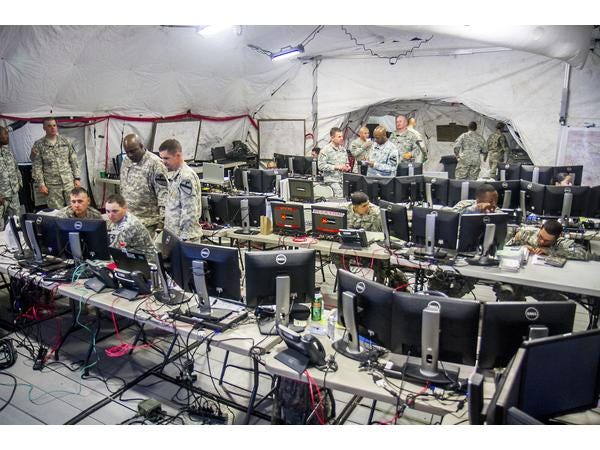Command Posts - Hunter or Hunted, with Lt Col. Matt. Arrol, U.S.A. - on Midrats
precision fires goes both ways
For generations, the US military’s senior leadership in the field had no reason to worry about being on the receiving end of enemy fires at their command posts. Even at the company level but especially at higher echelons, we expected that we would be safe and secure in our command posts. Command posts were where one watched, planned, and executed operations – not become player in one.
One of the defining characteristics early in the Russo-Ukrainian War was the high loss rate of Russian General Officers from enemy action. Part of this was due to the top-down traditions in the Russian Army that required direct, forward, and in person direction and guidance – but a significant part of that was the Ukrainian military’s reaching out to eliminate senior leadership where they led the fight - their command posts.
As precision long range conventional fires and the ISR that supports them become more common on even the most primitive battlefield, is it time for the USA and her allies to reconsider their own reliance on large, static, and “noisy” command posts?
Using an article he co-authored in the March issue of the US Army’s “Military Review” titled “The Graveyard of Command Posts” as a starting point for our conversation, our guest this Sunday for the full hour from 5-6pm Eastern will be Lt. Col. Matthew R. Arrol, U.S. Army, commandant of the U.S. Army Joint Support Team at Hurlburt Field, Florida.
He is a contributing member of NATO’s Integrated Capabilities Group on Indirect Fire. He is a graduate of the Command and General Staff College, and his civil schooling includes a bachelor’s degree in history and political science from Michigan State University and an MBA from Eastern Michigan University. His most recent operational assignment was as the deputy commanding officer of the 19th Battlefield Coordination Detachment in Ramstein, Germany, where he served from 2016 to 2020. Previous tactical assignments include battalion operations officer and executive officer, 3rd Battalion, 16th Field Artillery Regiment; and G-5 fires planner, 1st Cavalry Division.
Join us live if you can, or you can add Midrats to your podcast list simply subscribing at your favorite podcast aggregator - or you can just click here.



If it's not fast, agile and constantly moving it is dead on todays battlefield.
The next big war will rapidly degenerate into a slugging match using second tier weapons and tactics.
The Top weapons will be expended at a frightening rate.
How could massive semi-mobile sites with enormous RF signatures that rely on continuous high-bandwidth connections to fixed immobile CONUS data centers go wrong in a full-blown war between peers?